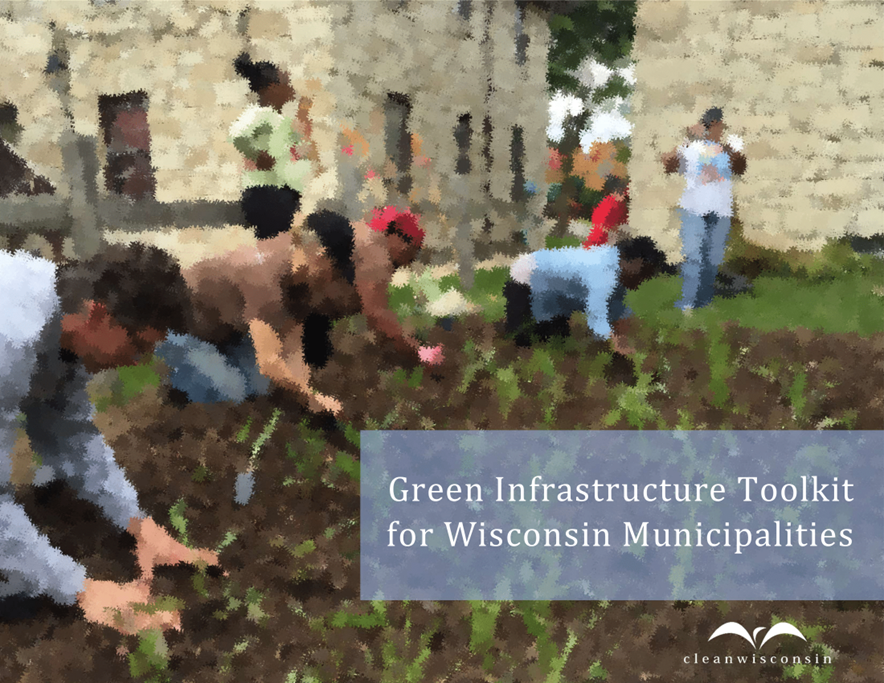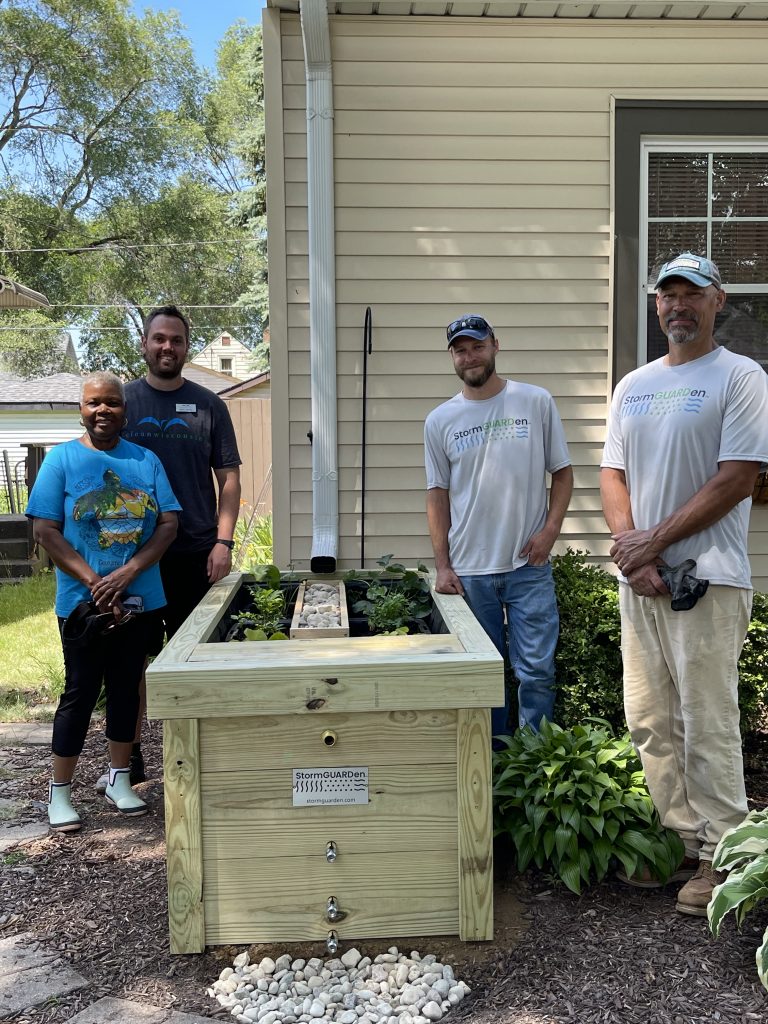local solutions
Local governments are typically the first to experience the impacts of floods and are on the front lines of developing infrastructure, regulations, and emergency responses. Fortunately, municipalities are uniquely positioned to implement green infrastructure. They often have the flexibility to enact change quickly and to tailor their responses while still serving as models for surrounding communities.
Climate is changing in Wisconsin—our state is 3 degrees warmer on average than it was in the 1950s and we get about 5 more inches of annual rainfall. The last three years have been the wettest ever recorded in our state. Conventional stormwater-management systems were not designed for Wisconsin’s new norm of increased rainfall and more intense storm events. Communities across the state are finding that the way they have managed stormwater for decades is no longer working. A continued reactive stance to flood events is proving to be far more costly than active prevention and adaptation. Rebuilding after flood events must incorporate proactive designs that do not replicate the inadequacies of conventional infrastructure but include green stormwater infrastructure.

The toolkit
The toolkit is rich with examples on how to enable and authorize green infrastructure through policy changes, quantified costs and benefits of green infrastructure, solutions to the many barriers faced by municipalities when it comes to implementation, and examples of successful efforts across the state. With community engagement and technical support, local governments can develop dynamic green infrastructure projects as creative solutions to flooding while also benefiting public health, the economy, and the environment.
Municipal staff, elected officials, and community members across Wisconsin shared their perspectives, time, and expertise in many ways to inform the development of this toolkit. Clean Wisconsin specifically thanks the Monroe County Climate Change Task Force, partners at the Milwaukee Metropolitan Sewerage District and the City of Milwaukee, and municipal staff in the Green Bay area for their contributions and insights. We also thank the McDougal Family Foundation for funding this project.
Further – this resource is an extension of the years of Clean Wisconsin’s community engagement and green infrastructure work in Milwaukee and other regions across the state. This work would not be possible without the organizations and individuals who have supported us and welcomed us into their communities.
What is Green Infrastructure?
Green infrastructure is an approach to stormwater management that protects, restores, or mimics the natural water cycle. Examples of green infrastructure practices include rain gardens and rain barrels. Clean Wisconsin engages with communities across the state to grow resiliency through green infrastructure. Learn more about Clean Wisconsin’s community work on our Resilient and Sustainable Communities page.
The largest growing source of water pollution in the U.S. is stormwater runoff: rainwater that washes across landscapes often collecting and carrying trash, bacteria, heavy metals, pesticides, animal waste and other pollutants to our local waterways. Green infrastructure practices reduce stormwater runoff by mimicking nature and capturing rainwater so it can be reused, temporarily retained, or allowed to infiltrate into the soil. These practices also help reduce the flooding risk and basement back-ups and ease the burden on combined sewer systems during large storms. Green infrastructure practices provide other environmental, social and economic benefits, including better air quality and cooling of the urban heat island effect thanks to more trees and vegetation, increased pollinator habitat, community engagement and job opportunities installing and maintaining green infrastructure.



